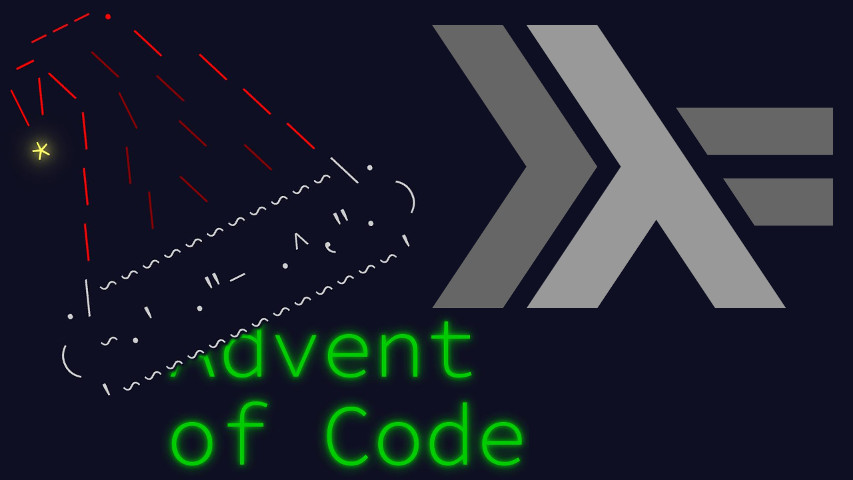Day 13, “Transparent Origami”, is the day of the human OCR. This post is your usual literate Haskell, with a few imports to start with.
import Control.Arrow ((&&&),(***),second)
import Data.List (nub)
import qualified Data.Set as SetThe puzzle input is a list of points and a list of folds. Let’s define simple types for those.
type Point = (Int,Int)
type Fold = Either Int Int -- ^ x fold ⊕ y foldA fold behaves just like you’d expect from a piece of paper. Here’s one way to implement it:
applyFold :: Point -> Fold -> Point
applyFold (x,y) (Left x0) = (x0 - abs(x0-x),y)
applyFold (x,y) (Right y0) = (x,y0 - abs(y0-y))In part 1, we’re only asked to fold once, then count the remaining number of distinct visible points after the colocated ones have merged.
part1 :: [Point] -> Fold -> String
part1 points fold = show $ length $ nub $ (`applyFold` fold) <$> pointsIn part 2, we perform the full fold sequence and try to recognize the code. I’ll only fold and present in code, the character recognition being left as an exercise to the user.
part2 :: [Point] -> [Fold] -> [String]
part2 points folds = render $ flip (foldl applyFold) folds <$> pointsThe rendering does warrant a word or two. I want to keep it agnostic to paper size. So I’ll first scan through the resulting folded points, aggregating:
- full point set
- topmost or leftmost encountered coordinate
- bottommost or rightmost encountered coordinate
render :: [Point] -> [String]
render = raster . scan where
scan = foldMap (Set.singleton &&& Just . Min2D &&& Just . Max2D)Then I’ll sweep the resulting matrix to generate lines:
raster (s,(Just (Min2D (xl,yl)),Just (Max2D (xh,yh)))) =
[ [ if (x,y) `Set.member` s then '#' else ' '
| x <- [xl..xh]
]
| y <- [yl..yh]
]I’m using two straightforward Semigroup instances to
manage two axes at once.
newtype Min2D = Min2D Point
instance Semigroup Min2D where
Min2D (a,b) <> Min2D (c,d) = Min2D (min a c,min b d)
newtype Max2D = Max2D Point
instance Semigroup Max2D where
Max2D (a,b) <> Max2D (c,d) = Max2D (max a c,max b d)The rest is parsing and wrapping, that doesn’t really need any more explanation at this point in the month.
main :: IO ()
main = interact $ unlines . uncurry (:) .
( uncurry part1 . second head &&&
uncurry part2
) . parse
parse :: String -> ([Point],[Fold])
parse = (map readPoint *** map readFold . tail) . break null . lines
readPoint :: String -> Point
readPoint (break (== ',') -> (x,',':y)) = (read x,read y)
readFold :: String -> Fold
readFold (words -> ["fold","along",f]) = case f of
'x':'=':n -> Left (read n)
'y':'=':n -> Right (read n)This concludes today’s solution. See you tomorrow!



